15 Things to Do So Your Plants Don’t Wither in the Heat
Keeping plants healthy during hot and dry weather can be a real challenge, especially when the sun feels unrelenting and the soil dries out quickly. With a few simple steps, though, you can give your garden the care it needs to make it through tough conditions. From watering habits to providing shade, these tips will help your plants stay strong even when the heat is at its worst.
This post may contain affiliate links, which helps keep this content free. Please read our disclosure for more info.
Water Deeply, Not Frequently
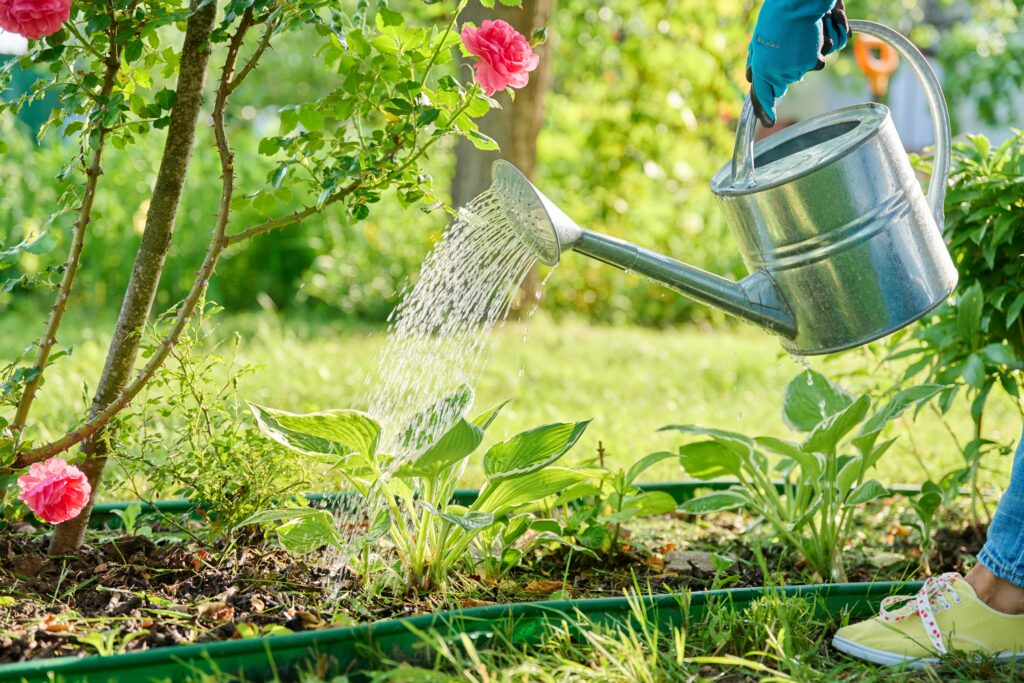
Shallow watering often encourages roots to stay near the surface, making plants more vulnerable to drying out. By soaking the soil thoroughly, the water reaches deeper layers where roots can access moisture for longer periods. This approach helps plants withstand hot spells without constant watering.
When you water deeply, it also prevents the quick evaporation that occurs when only the top layer of soil is wet. Plants that develop stronger root systems are generally more stable and resilient. This method is especially important for vegetables and flowering plants that rely on consistent hydration.
Water Early in the Morning
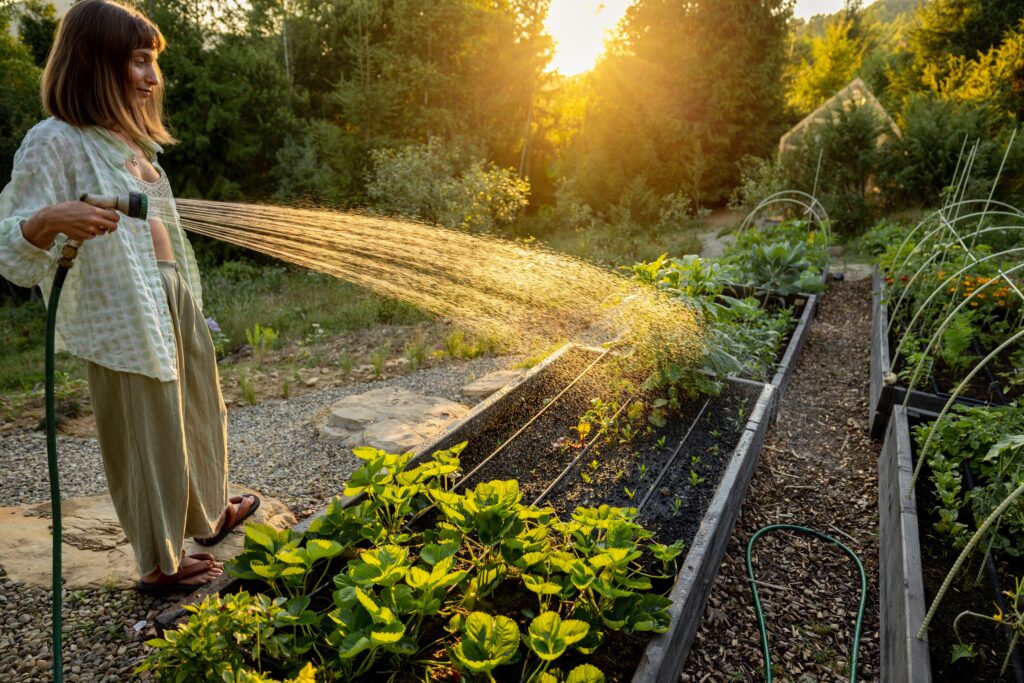
The best time to water is at sunrise or shortly after, when temperatures are still cool. Moisture can soak into the soil without competing with the midday sun. This gives plants the chance to take in water before the heat intensifies.
Morning watering also reduces the risk of fungal issues that may occur if leaves stay wet overnight. Since the sun rises soon after, any excess moisture on foliage dries naturally. Establishing this routine can make a noticeable difference in plant health during dry conditions.
Use Mulch Generously
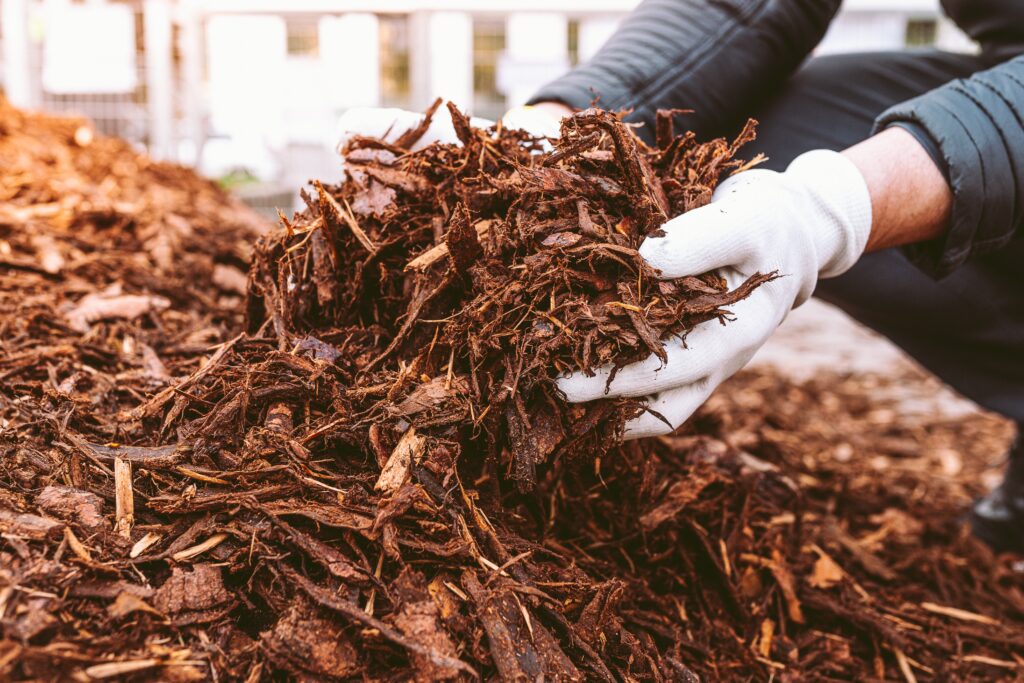
A thick layer of mulch acts as a shield for the soil, reducing the amount of water lost to evaporation. Materials like shredded bark, straw, or even dried leaves help trap moisture where roots need it most. Mulch also lowers soil temperature, which is vital in extreme heat.
Beyond moisture retention, mulch helps suppress weeds that would otherwise compete with plants for water. As organic mulch breaks down, it adds nutrients back into the soil, improving overall quality. Applying mulch around your garden is one of the easiest ways to protect plants in dry weather.
Group Plants by Water Needs
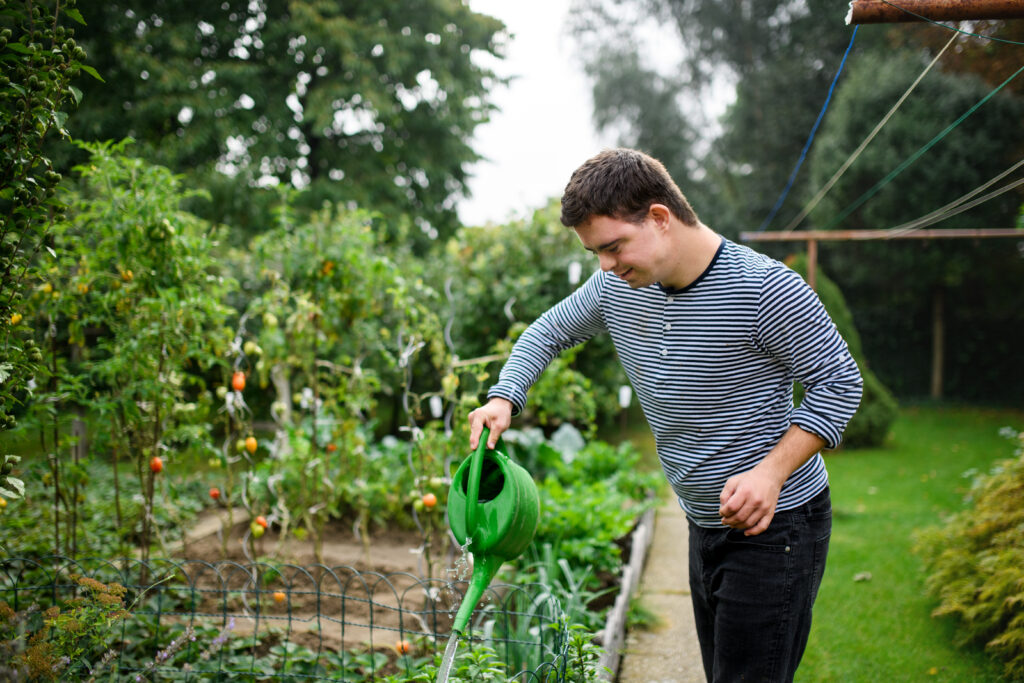
Placing plants with similar watering requirements in the same area saves time and effort. This way, you can provide the right amount of moisture without overwatering or underwatering certain varieties. Grouping also makes it easier to monitor how each set of plants is doing.
For example, herbs like rosemary and thyme need less water than leafy greens. Keeping them together prevents confusion and reduces wasted resources. With this strategy, plants thrive in conditions that match their individual needs.
Provide Shade During Peak Heat
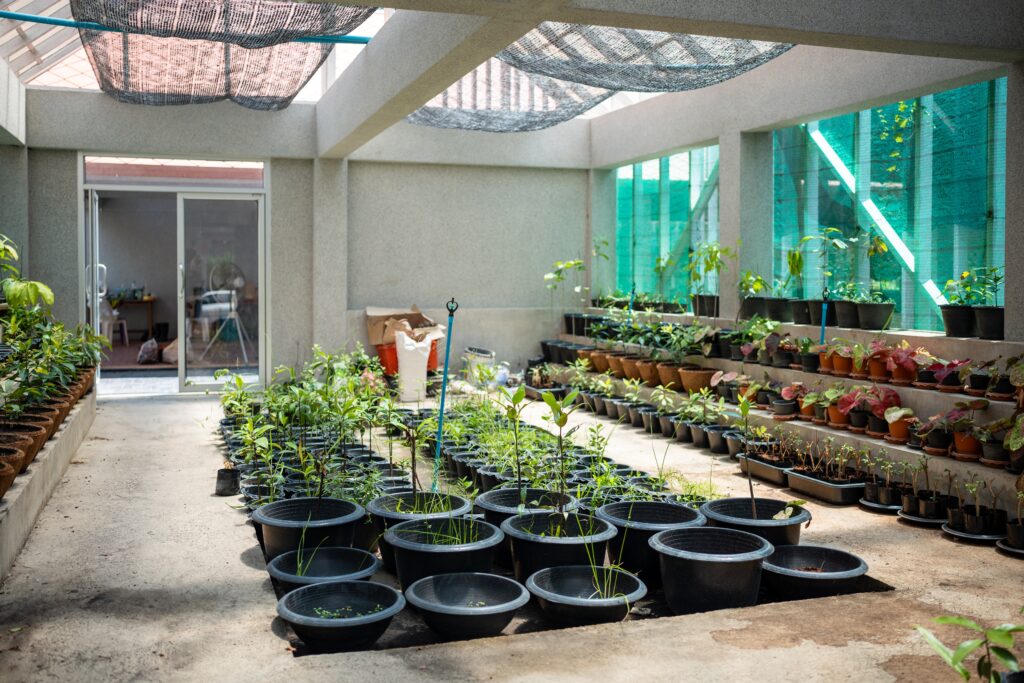
During the hottest part of the day, many plants struggle to cope with direct sun. Using shade cloths, lightweight fabric, or even umbrellas can provide temporary relief. This barrier helps lower the temperature around sensitive plants.
Shade protection is especially important for seedlings, potted plants, and vegetables like lettuce that wilt easily. Even a partial shield during the afternoon can prevent leaves from scorching. A little shade can be the difference between a thriving garden and one that withers.
Check Soil Moisture Before Watering
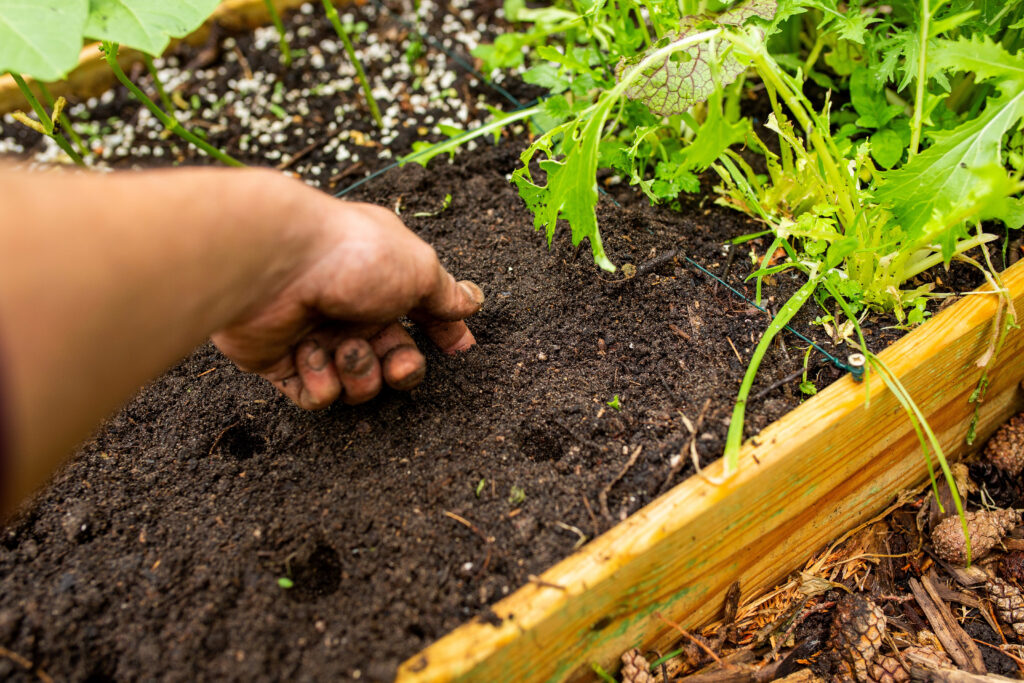
Overwatering is just as harmful as underwatering, so it’s wise to test the soil first. Simply press a finger into the dirt; if it feels dry about an inch down, it’s time to water. If it still feels damp, wait another day.
This small habit helps avoid root rot and other problems caused by too much moisture. It also saves water, which is especially important during hot and dry spells. Paying attention to soil conditions is one of the easiest ways to support plant health.
Choose Drought-Tolerant Plants
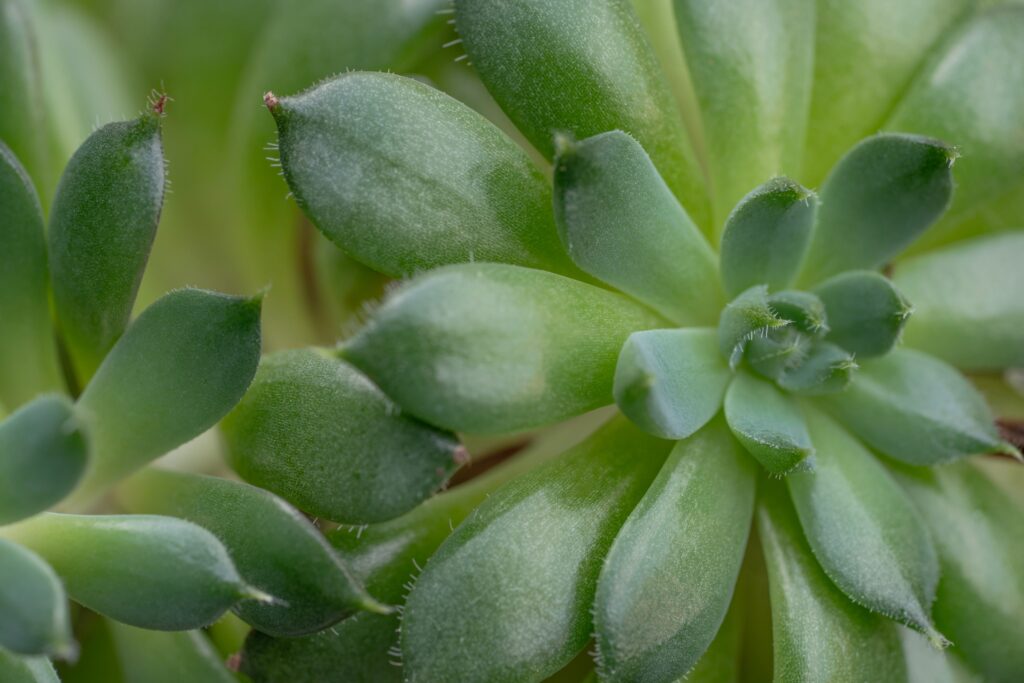
Some plants are naturally better equipped to survive dry conditions. Succulents, lavender, and many native species can thrive with less water. Planting these varieties reduces the stress of constant watering.
Incorporating drought-tolerant options doesn’t mean sacrificing beauty. Many of these plants bring color, fragrance, and texture to a garden. By mixing them into your space, you can create a lively display that’s easier to maintain.
Avoid Fertilizing in Extreme Heat
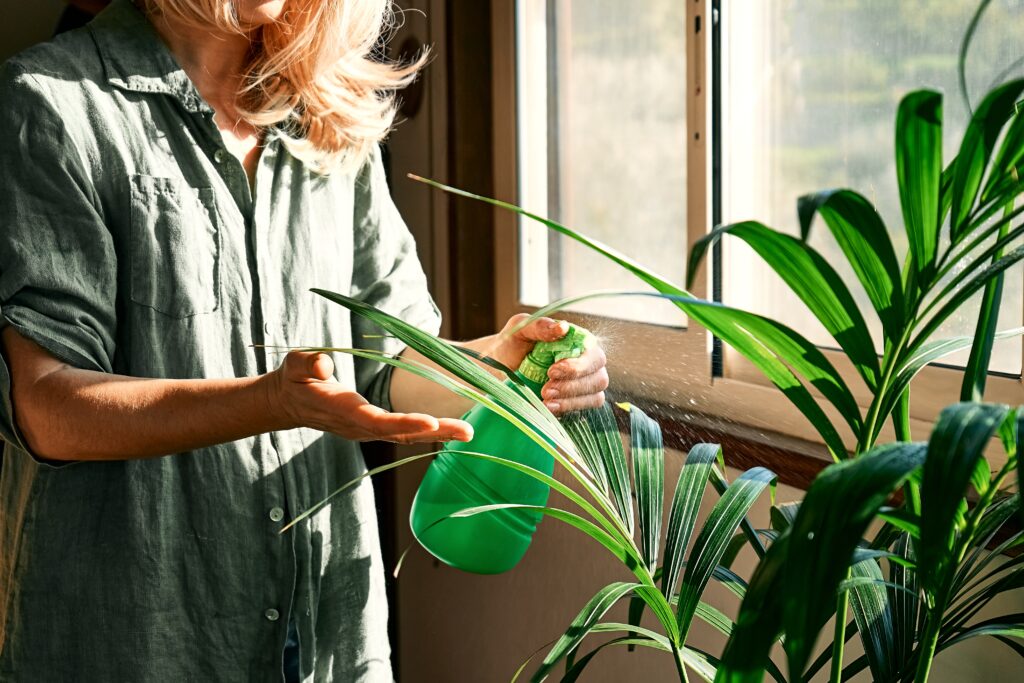
When temperatures climb, adding fertilizer can strain plants instead of helping them. Extra nutrients require more water for absorption, which plants may struggle to access in dry soil. This can lead to stress and even damage.
Waiting until conditions are cooler allows plants to process nutrients more effectively. In the meantime, focus on consistent watering and providing shade. Patience during heat waves pays off with healthier growth later.
Prune Wisely
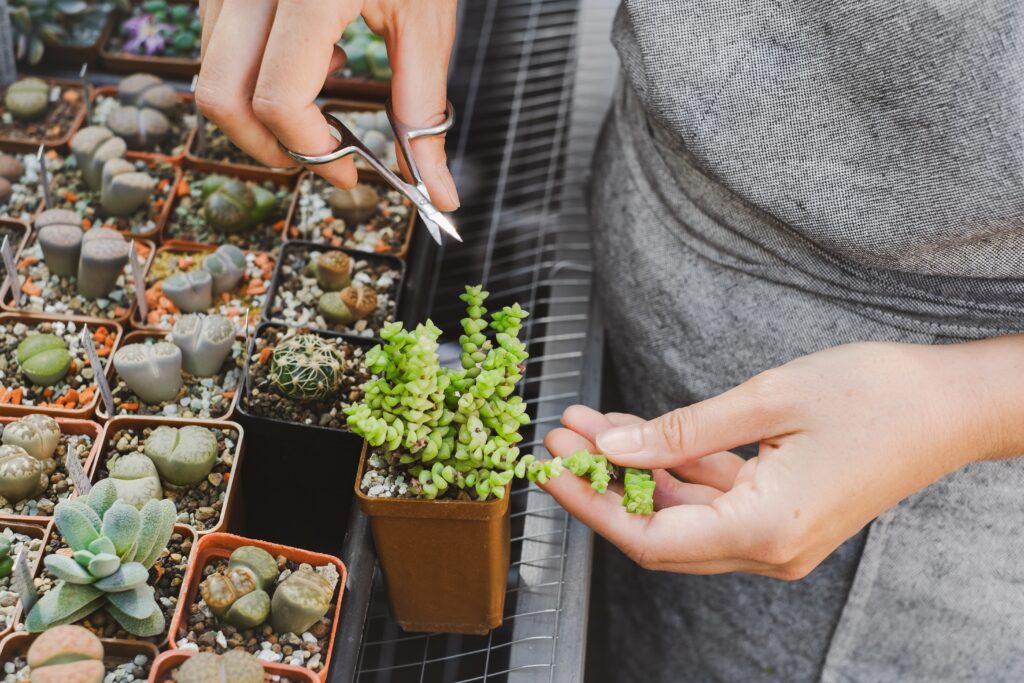
Removing dead or damaged leaves helps plants conserve energy and direct it toward new growth. Light pruning can also improve air circulation, which is helpful in hot weather. However, cutting too much at once leaves plants more exposed to the sun.
Be selective when pruning during dry conditions. Focus on trimming only what’s necessary and avoid major shaping until the weather cools. This careful balance supports plant health without adding unnecessary stress.
Use Self-Watering Containers
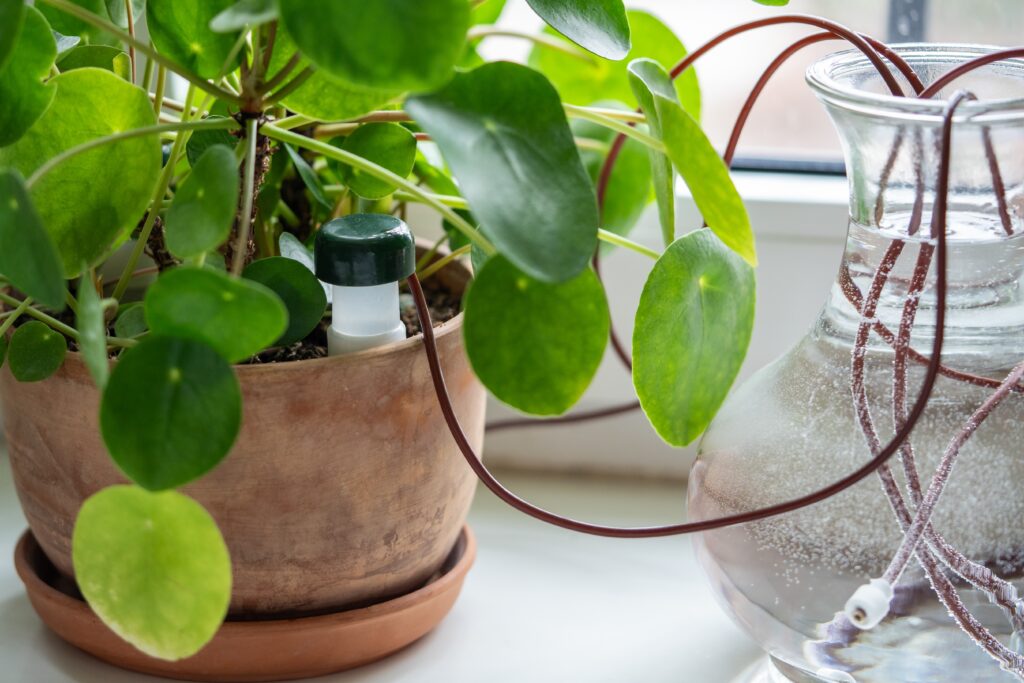
For container gardens, self-watering pots are a lifesaver in dry conditions. These containers hold a reservoir of water that plants can draw from as needed. This system keeps soil consistently moist without constant attention.
Self-watering containers are especially useful for busy gardeners or those who travel often. They reduce the risk of plants drying out between waterings. With this setup, potted plants stand a better chance of thriving through heat waves.
Collect Rainwater (If Possible)
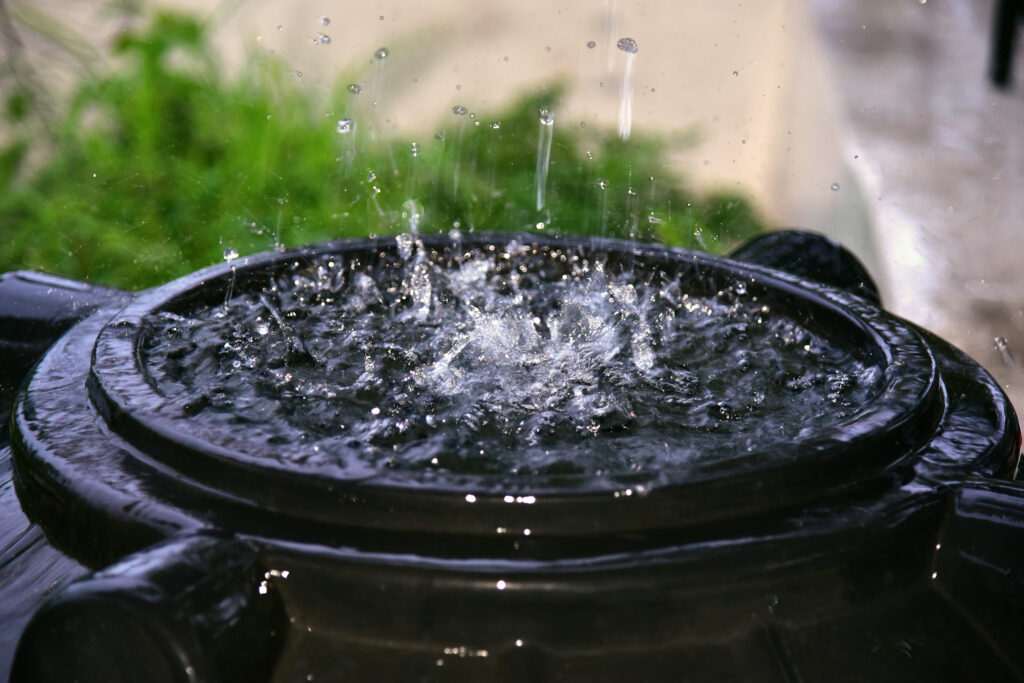
Storing rainwater is a simple and eco-friendly way to prepare for dry spells. Barrels or buckets placed under downspouts can collect large amounts during a single rainfall. This supply can be used later when conditions are hot and dry.
Rainwater is often better for plants than tap water, since it’s free of chemicals like chlorine. Having a reserve also helps reduce water bills if you’re maintaining a large garden. It’s a sustainable step that benefits both plants and the gardener.
Install Drip Irrigation or Soaker Hoses
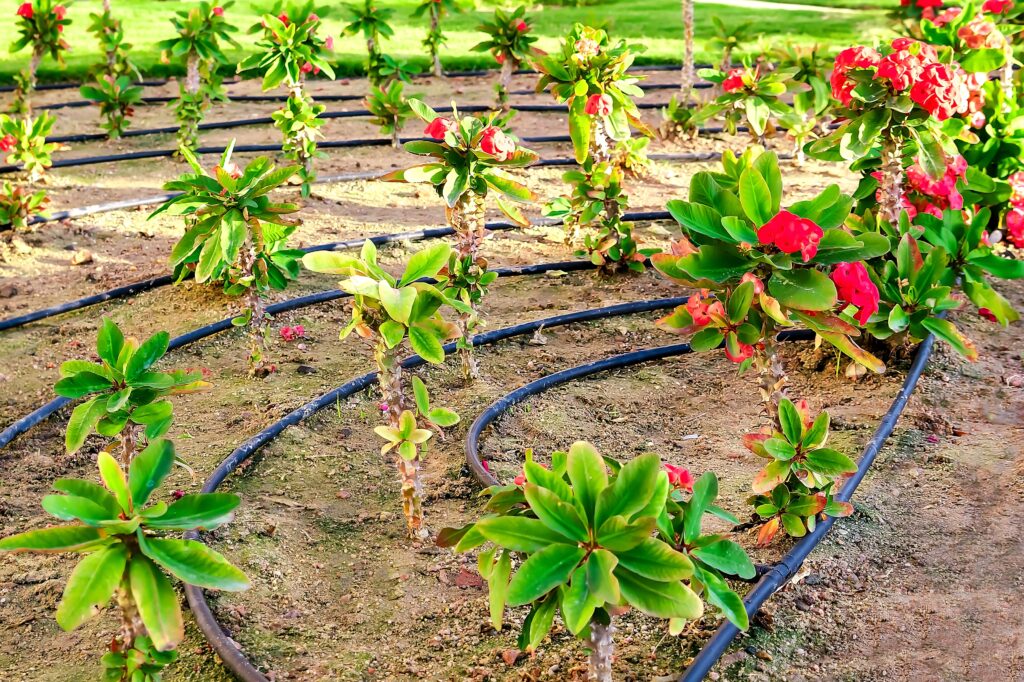
Instead of spraying water from above, drip irrigation delivers moisture directly to the soil near roots. This method minimizes evaporation and ensures plants get what they need most. It’s particularly useful in vegetable beds and flower gardens.
Soaker hoses offer similar benefits by slowly releasing water along their length. Both options cut down on waste and make watering more consistent. Once set up, they provide steady hydration even during scorching days.
Improve Soil with Organic Matter
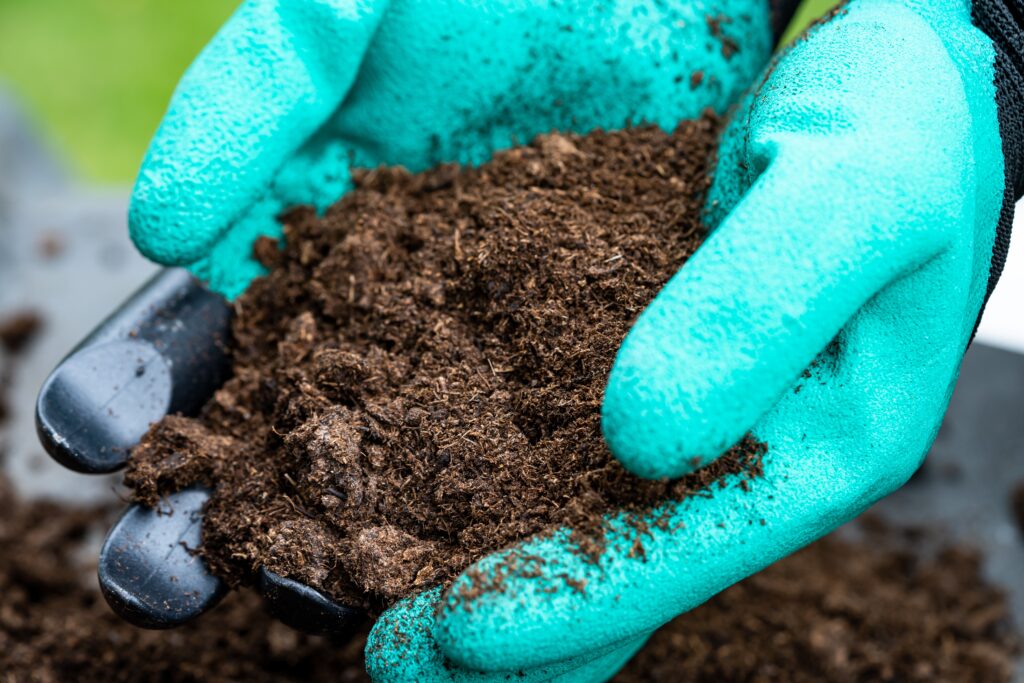
Healthy soil holds onto water much better than poor, sandy soil. Adding compost, aged manure, or peat moss helps improve structure and increase moisture retention. Over time, soil becomes richer and more supportive for plants.
Organic matter also feeds beneficial organisms that contribute to long-term soil health. The result is a growing environment where plants can better withstand heat and dryness. This small investment yields lasting benefits season after season.
Rotate and Move Containers
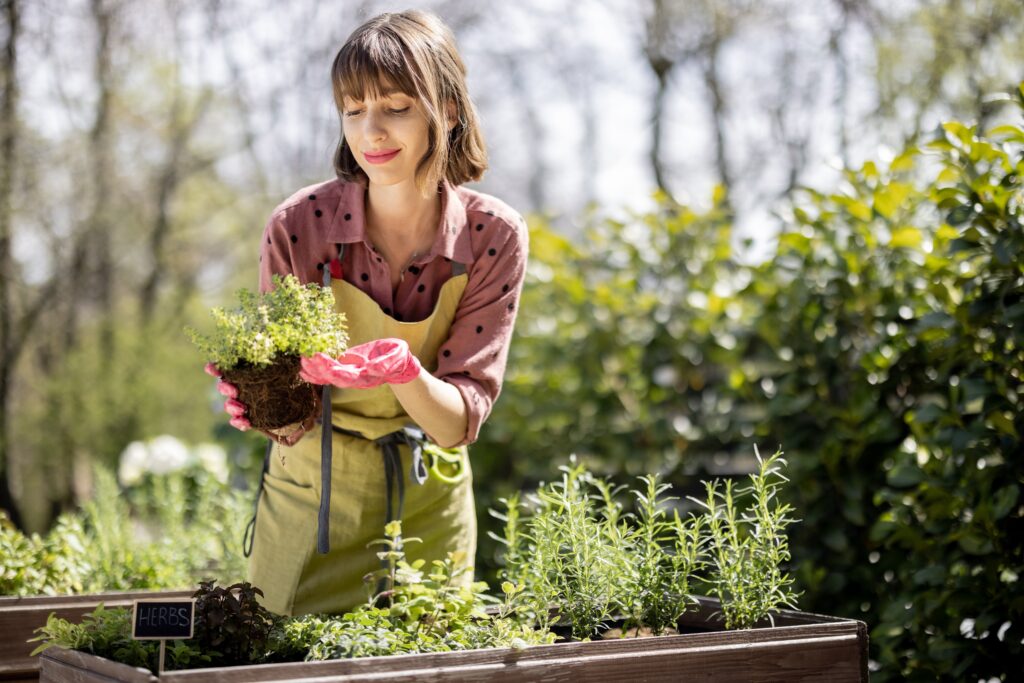
Potted plants have the advantage of mobility, which is useful in harsh conditions. You can move containers to shaded areas during the hottest part of the day. Rotating them also prevents one side from becoming overly stressed by sun exposure.
This flexibility is particularly helpful for delicate plants or those in smaller pots. Since containers dry out faster than garden beds, adjusting their location can greatly improve survival. It’s a simple habit that protects plants from extreme heat.
Keep an Eye on Heat-Stressed Signs
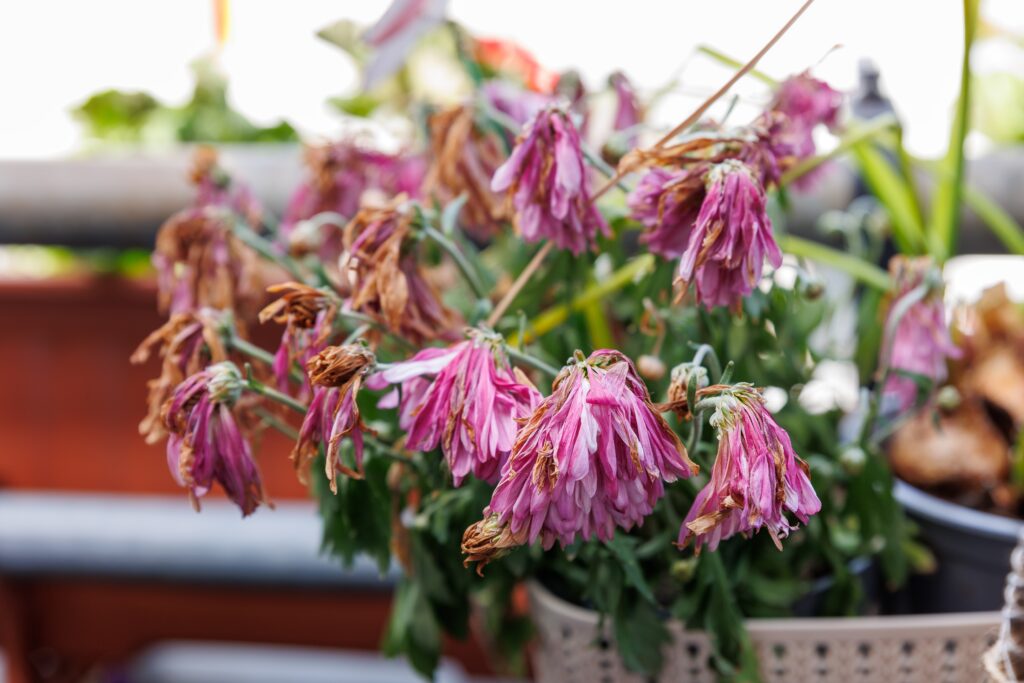
Plants often show visible signs when they’re struggling in hot weather. Wilting, yellowing, or scorched leaves are all indicators that they need attention. Catching these symptoms early gives you a chance to correct the issue.
Responding quickly may involve adding shade, increasing water, or trimming back damaged foliage. Each small adjustment can help bring the plant back to health. Staying observant allows you to act before the damage becomes too severe.
This article originally appeared on Avocadu.
